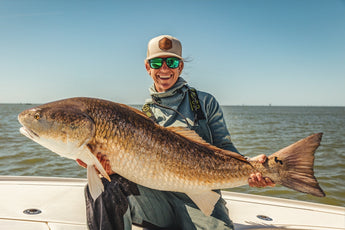If you and your family are among the millions with plans to head to the beach this summer, you’ve probably already had visions of lounging by the water with a cold drink in your hand. It’s important to recharge the batteries, but there’s nothing stopping you from satisfying your sense of adventure at the same time. Plant a fishing pole by your chair and discover the joys of surf fishing, a leisurely past-time until you land one. To make landing a fish more likely, follow these tips.
Ask The Locals
During a one or two week trip, you don’t have time to waste. Head to a fishing pier or tackle shop to learn what tactics and tackle the locals are using. You’ll encounter some protective anglers who wouldn’t consider sharing their intel, but most guys will be happy to point you in the right direction. Learn and follow all the local regulations to ensure that your new friends stay friendly, and if all the old guys on the pier are using the same tackle, or there’s a crowd of anglers growing on the same stretch of beach, consider following suit.

Scout It Out
Most beginner surf anglers simply walk onto the beach and cast a line in, believing that there must be something below the water’s surface. There may be, but you’ll greatly improve your odds by scouting out your spots the day before. Walk the beach at low tide and look for rocks and structures, hard ground areas, and shellfish beds which attract bait fish and their predators. At low tide, watch where the waves are breaking to locate the sandbar.
Timing
Just like your fair winter skin, fish feel more threatened when the sun’s overhead. Get your line in the water at low light when these fish make their way closer to shore. During this time, work the trough between the beach and sandbar, targeting the structure and cover you located on your earlier scouting mission. Incoming tides are best, especially early morning, but there’s no harm in giving it a shot when the tide goes out.

Your Setup
More than likely, your everyday fishing gear is not built to handle saltwater and the fish that swim in it. You’ll need a rod that’s sturdy enough to cast a heavy sinker, with enough line to let the big fish run a bit. That’s not to say that you need to go out and buy a fifteen-footer. A medium-heavy 7-9-foot spinning combo with 10-pound monofilament will work perfectly for smaller catches like mullet, pompano, bluefish, croaker, and flounder, which offer your best bet of filling a cooler. Set this rod up with fresh or frozen shrimp or mole crabs on a Carolina or pompano rig, or a weighted double dropper. The goal is to keep your bait off the bottom so it’s in the area of the water column where fish are likely to find it. If you’re using a pyramid weight, match it to the current you’re fishing. Some traditional freshwater tactics are worth trying, too. Bouncing a bucktail jig near the breakers may just get the attention of the bigger fish that feed there, and plastics are always worth a try. In general though, live bait is best.
If you have dreams of landing a trophy on your beach trip, you’re gonna need a bigger rig. The savviest of anglers stay active with the smaller setup, and keep a longer rod staked in the sand with a length of PVC pipe. This rod should be at least 12 feet in length, and should be paired with a reel that can hold at least 300 yards of line. On your larger rig, use cut fish like mullet, mackerel, or sardines.
Tools Of The Trade
When you’re not sure what’s on the end of your line, it’s nice to have a hook remover and pair of fishing gloves handy. For your rod stake, use a hacksaw to cut a 45 degree angle on the end of a 5’ length of PVC, and bring along a mallet to drive it into the sand. If you bring live bait, it’s best to keep them in a bucket with an aerator so it stays live bait. If you’re the type to jump right into the deep end, and you already have a shopping spree planned, you may consider picking up a PVC cart at a beach town fishing shop. For those who prefer to keep it simple, a backpack or tote will come in handy as you work your way down the beach.

Play It Safe
Any time we venture into the wild, we expose ourselves to risk. That’s especially true when it comes to water. Know your limits. Even experienced swimmers have fallen victim to dangerous riptides. Pay attention to changing tides and weather, as well as the ground you’re walking on. It’s easy to get distracted by the action in the water, but don’t lose sight of the hazards that may surround you on land. It’s also easy to lose track of time, especially when the bite is good. Stay hydrated, and protect your skin with UPF-rated clothing.
Hold The Line
Surf fishing requires patience and a bit of stubbornness. Avoid over-casting as you’ll more quickly use up your bait. Grab a chair, crack a beer, and settle in.


